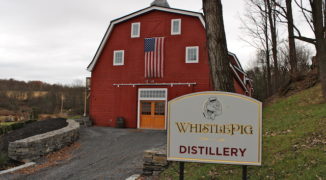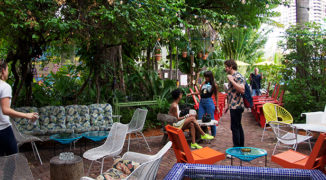A small tractor pulls the stone tahona wheel in steady circles around a shallow pit, the weight of the volcanic stone separating the juicy pulp of roasted agave hearts from the tough fiber of the plant. Two workers in rubber boots stand inside the pit, coaxing the sinewy, rust-colored material apart with pitchforks while the tahona starts and stops its deliberate cruise. It’s 8 a.m. at La Fortaleza Distillery in Tequila, Mexico, and work is moving slowly.
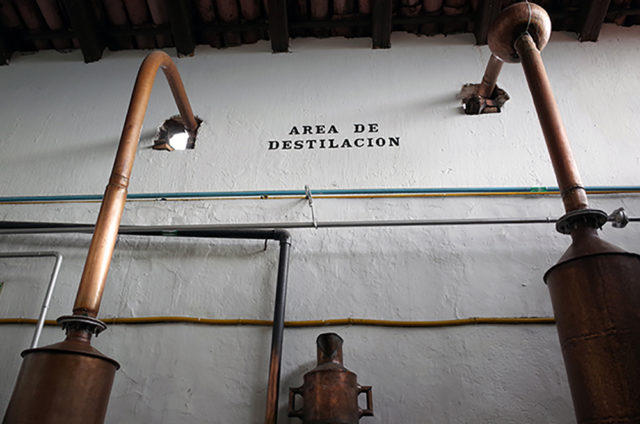 Fortaleza double distills its tequila in 100-year-old copper pots.
Fortaleza double distills its tequila in 100-year-old copper pots.
That’s entirely intentional. The petite factory that produces Fortaleza Blanco, Reposado and Añejo makes tequila by hand, using a laborious process that eschews modern advancements for techniques and equipment that date back generations. While most of their neighbors run slick factories, at Fortaleza they’re still making tequila in much the same way that general manager Guillermo Erickson Sauza’s great-great-grandfather did more than a century ago.
Don Cenobio Sauza founded his first distillery in the town of Tequila in 1873 and created the famous brand that still bears his last name. His face is on the bottle of Sauza’s Tres Generaciones line along with Guillermo’s great-grandfather, Eladio, and grandfather, Javier, with whom Guillermo spent childhood summers, working in the distilleries and learning the family business.
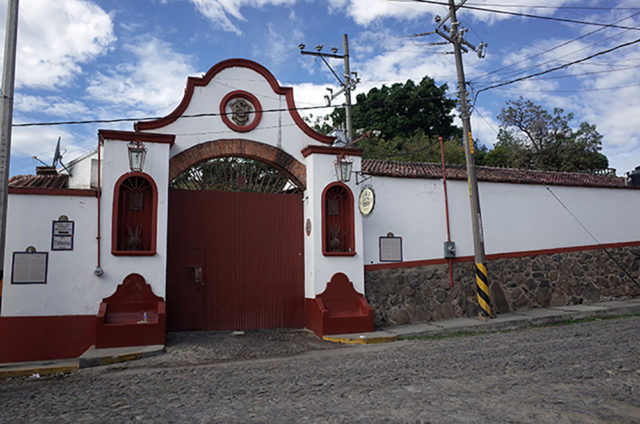 Set behind high walls, Distillery La Fortaleza dates back to Guillermo’s grandfather, Javier, who ran Casa Sauza before selling it in the 1970s.
Set behind high walls, Distillery La Fortaleza dates back to Guillermo’s grandfather, Javier, who ran Casa Sauza before selling it in the 1970s.
As the website for tequila powerhouse Casa Sauza explains, “For generations, the Sauza family has demonstrated their passion and pride for tequila by producing the finest spirits available and presenting them to the world. In essence, their story is the story of tequila.”
However, in 1976 Javier sold the company, stunning the family and effectively stripping his heirs of their birthright. For more than 30 years, the Sauza clan simply stopped making tequila.
“I certainly didn’t understand then,” recalls Guillermo, over the phone from Mexico. “I felt that I was going to be able to run the company one day.”
However, the family did keep one modest property on the edge of town with a long-shuttered distillery. On a cobblestone street just five minutes from Casa Sauza’s campus, Guillermo found his way back into the tequila industry in the early 2000s.
“It was the number 3 distillery of my grandfather, it was the smallest,” Guillermo says. “It’s called La Fortaleza and that’s what we named our brand.”
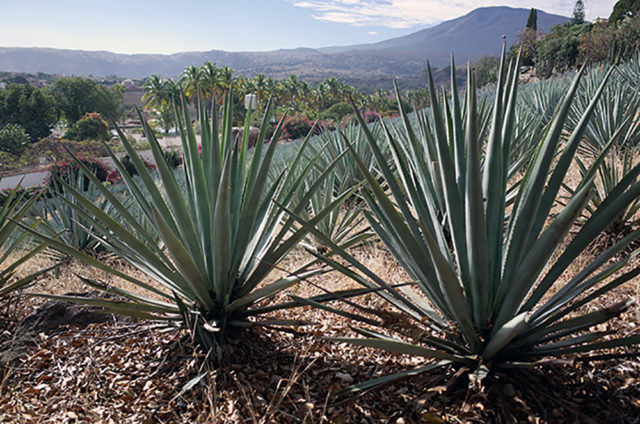 Rows of spiky agave plants line the hillside behind the distillery.
Rows of spiky agave plants line the hillside behind the distillery.
Behind a red gate and high walls, rows of spiky blue agave climb the hillside above a cluster of whitewashed buildings. Here about 45 people take Fortaleza from raw plant to finished product, every step nodding to traditions being lost in modern tequila, and every step affecting the flavor in your glass.
First there is the agave itself, 100 percent Weber Blue grown in the valley for seven or eight years until maturity. Harvested by jimadores, the agave hearts (or piñas) are steam-cooked in a brick oven for about 36 hours. That’s substantially longer than the pressure-cookers other companies use, but Guillermo likens it to baking a potato in the oven instead of nuking it in the microwave. The taste is just different.
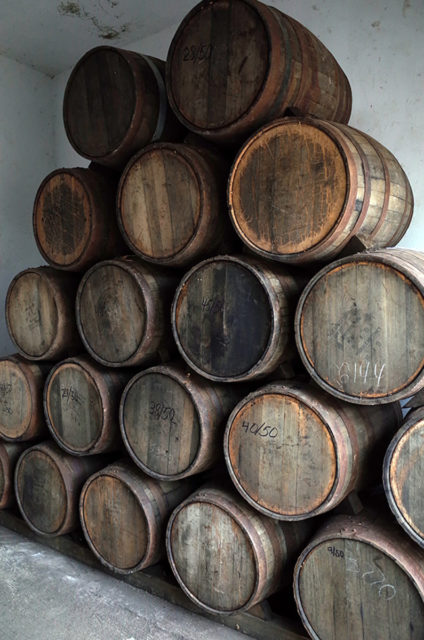 Fortaleza ages its tequila in re-chipped and re-charred American oak whiskey barrels. Guillermo prefers the añejo, straight up with a side of water.
Fortaleza ages its tequila in re-chipped and re-charred American oak whiskey barrels. Guillermo prefers the añejo, straight up with a side of water.
Next the roasted hearts, now resembling smooth, basketball-sized pine cones, move to the pit, where the two-ton tahona methodically grinds the plants into a pulp and separates the fibers from the juices. From there, the mix goes into open-air wood tanks for fermentation, before being double distilled in 100-year-old copper pots. Finally, the reposado and añejo age in used American oak whiskey barrels for eight and 18 months, respectively. Even the water, drawn from a deep well near the extinct Volcán de Tequila, is important. “It gives it the terroir,” Guillermo explains. “This is the heartland. This is where it all started.”
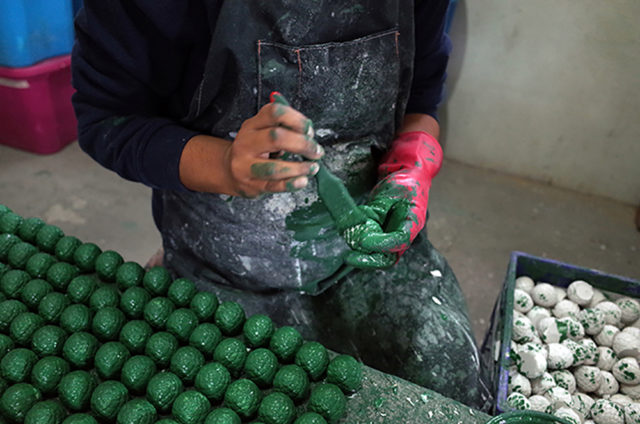 Fortaleza’s bottles are hand-blown in Tonalá, an artisan town outside of Guadalajara. The signature agave-shaped stoppers are molded and painted by hand at the distillery.
Fortaleza’s bottles are hand-blown in Tonalá, an artisan town outside of Guadalajara. The signature agave-shaped stoppers are molded and painted by hand at the distillery.
The process is neither the most efficient nor the most profitable. Making tequila at La Fortaleza requires patience and a profound respect for tradition and craft. Sure, they could cut corners, automate more, replace people with assembly lines and brick ovens with autoclaves. They could stop bottling on-site, stop molding each plaster agave-shaped bottle stopper in a building across from the distillery, stop painting each one by hand in a narrow second-floor workshop. But that would go against the philosophy behind Fortaleza, the reason Guillermo returned to the tequila industry in the first place.
“Not very many people in their lifetime get to walk in the footsteps of their abuelo, bisabuelo and tatarabuelo,” Guillermo says. “To a degree, I’m a caretaker here, a caretaker of the history.”
And though he admits the company’s growth is inherently limited by its commitment to the past, the capacity of its vintage equipment and the pace of its production process, he’s steadfast in his refusal to change.
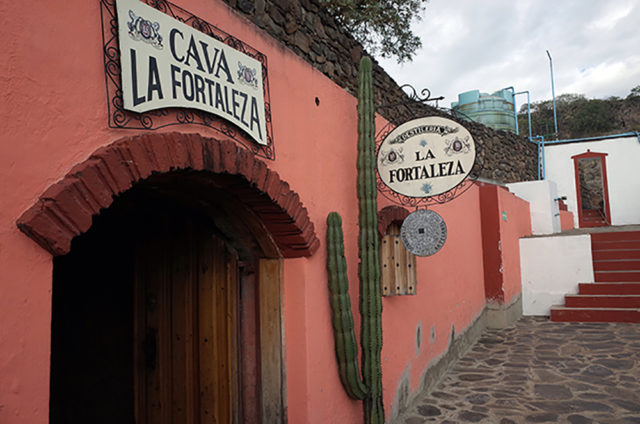 A cave at the distillery serves as the tasting room.
A cave at the distillery serves as the tasting room.
“We’re not going to change nothing,” Guillermo says. “We’re going to keep making it the way my great-grandfather made it. And you know, if there’s a supply problem at some point, there’s a supply problem at some point. We’ll stop adding territories. They won’t be able to drink our tequila in Russia.”



